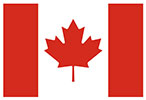Why Managers Need to Think Strategically
By Edward T. Reilly
The shift toward a strategic mindset is essential for managers who must help their organizations succeed in an environmental of continual change. While ultimately driven by the marketplace, companies must also respond to changes in the economy, technology, social and lifestyle choices, the political landscape, and global competition. As a result, the very nature of organizations is changing. Organizational structures have been turned upside down, flipped, stretched, and compressed.
The way information and ideas flow needs to change to reflect this dynamic nature of today’s organizational structures. Senior management is listening as well as telling; it is watching as well as showing; and it is expecting employees at all levels to be producers (and not just users) of information, new ideas, and solutions.
Employees at all levels should be encouraged to develop, suggest, and implement new strategies for:
- Increasing organizational effectiveness
- Reducing costs
- Improving customer service levels
- Making a positive contribution to the bottom line
A Strategic Frame of Reference
One of the key characteristics of a strategic thinker is the ability to think concurrently along dual tracks. A strategic thinker must consider and incorporate data that may include short‐ and long‐term challenges, systems and people, and innovation and imitation. This can be challenging to an operational manager since these factors often appear to be in conflict with one another. An effective strategizer thinker/manager makes decisions and takes actions, having constantly explored and considered these dualities.
To do this well, a strategic frame of reference needs to be defined and applied to the organization and its business environment. The frame of reference will guide you through the maze of options that can occur. The strategic frame of reference is a planning tool, to help your department or work unit and
entire organization to:
- Establish goals
- Define tasks
- Clarify roles and relationships
- Monitor progress
As such, the frame of reference should be dynamic, not static. It is not simply a long‐range plan, drawn up every few years by senior management and placed on a shelf. Instead, it is an evolving tool that requires periodic review.
Operational managers are familiar with operational plans, budgets, and objectives—these resources are the foundation of managerial work. Managements may also be aware of the company’s long‐range goals and even some of the key strategies it plans to initiate to meet its goals. They are usually stated at a high level and in a conceptual manner, lacking specific quantifiable measures or time frames. Often, these statements by the company are published, promoted, and incorporated as evidence of the culture or “spirit” of the company. Seldom, however, do these high‐level statements connect directly to
the actions operational managers must execute on a day‐to‐day basis. The strategic frame of reference creates the framework that strategic thinkers can/should use to move their organizations into the future. It provides the working content for carrying out operational initiatives (the “what is”) and creates a framework for strategically envisioning the future (the “what if”).
The strategic frame of reference and its elements are illustrated in the following diagram. The form of a pyramid is used, since each level supports the one above it. The focus, though, is always on the customer or client served.
The elements of the strategic frame of reference includes:
- Vision which describes where you want the company, business unit, department, or work group to be in the foreseeable future.
- Mission which describes why the company, business unit, department, organization, or work group exists.
- Goals are what will get you to your vision.
- Objectives are the major steps you will take to achieve the goals.
- Strategies describe how you will go about taking the steps.
- Tactics describe who will do what, and by when.
- Roles describe the range of tasks each function must assume.
- Relationships describe how people work with others to be successful in achieving a common goal.
Excerpted, with permission of the publisher, from AMA Business Boot Camp: Management and Leadership Fundamentals That Will See You Successfully through Your Career. Edited by Edward T. Reilly. Copyright 2013, American Management Association. Used with permission of the publisher, AMACOM, a division of American Management Association.
About the Author(s)
Edward T. Reilly is the President and Chief Executive Officer of American Management Association International. Prior to joining AMA, he was president and CEO of Big Flower Holdings, Inc. (now Vertis, Inc.), a leading provider of integrated marketing and advertising services.

